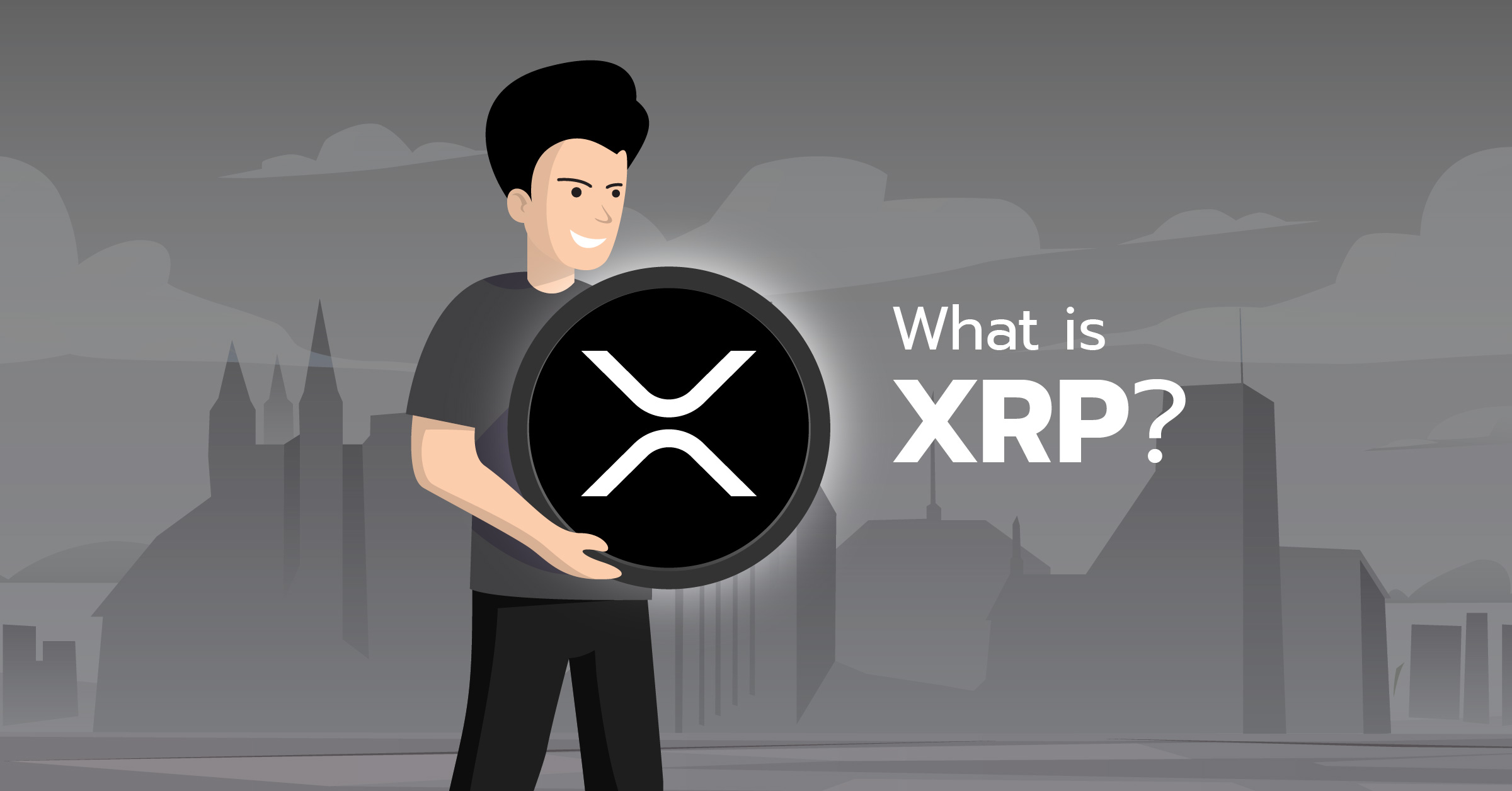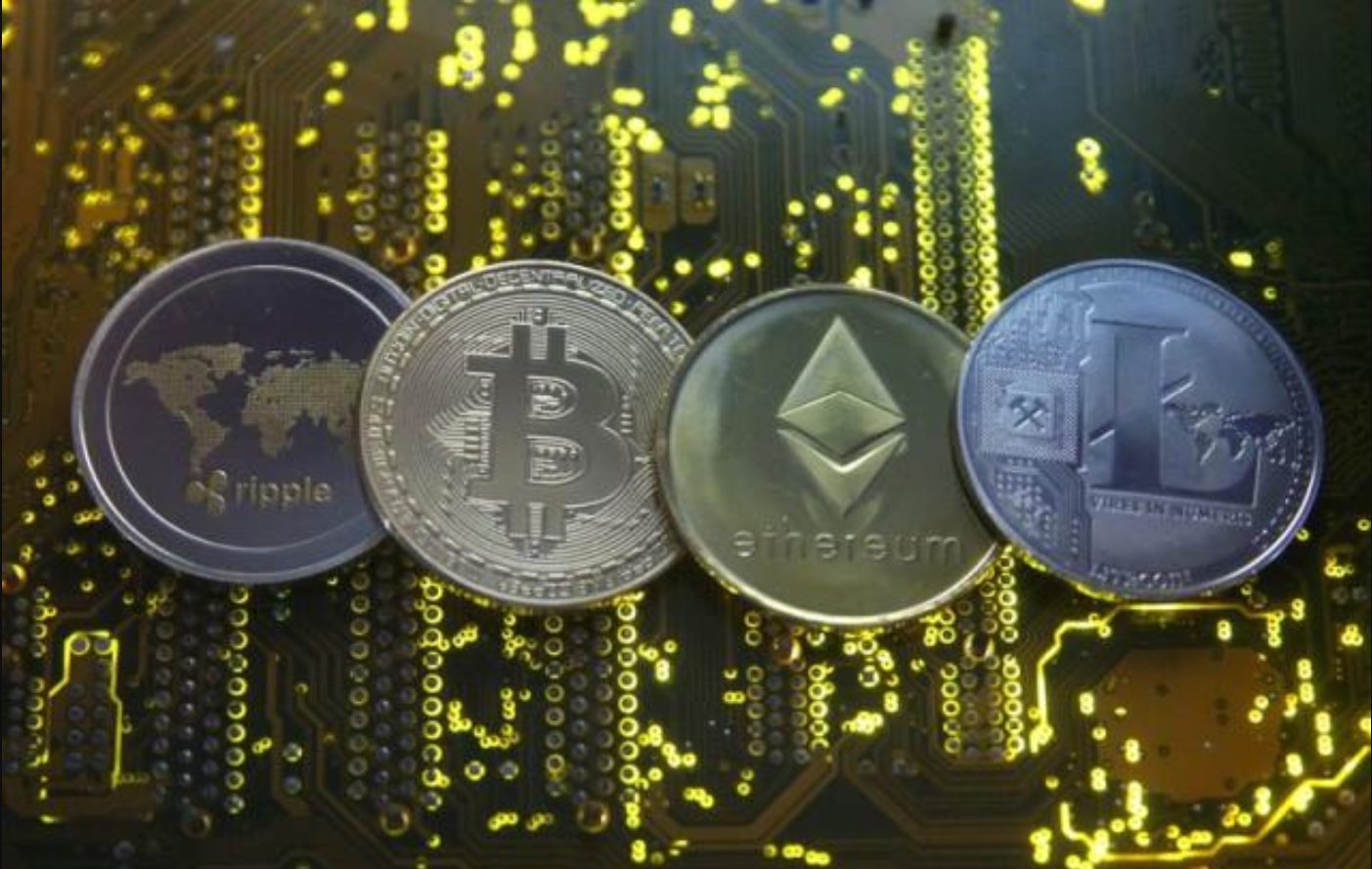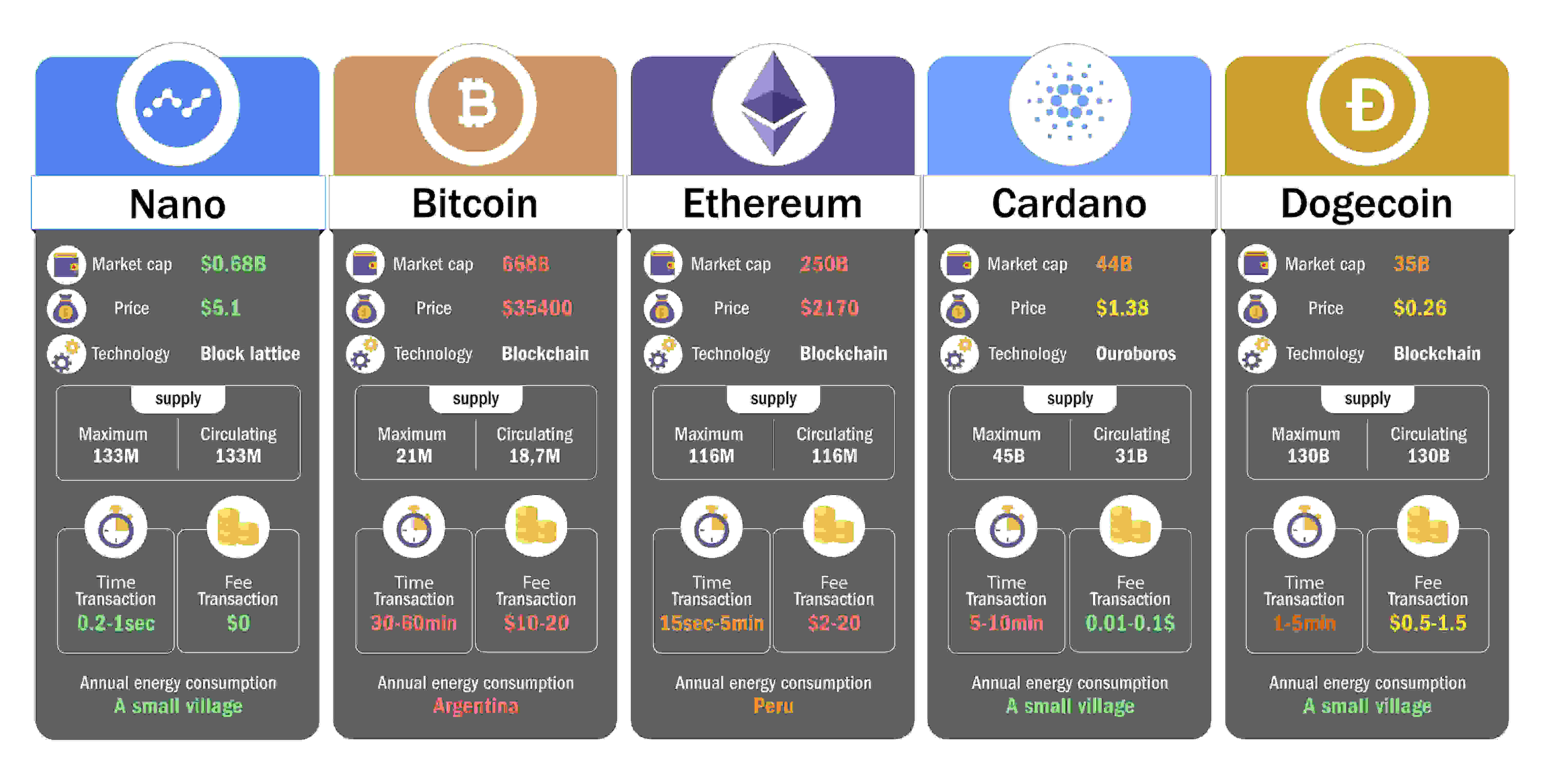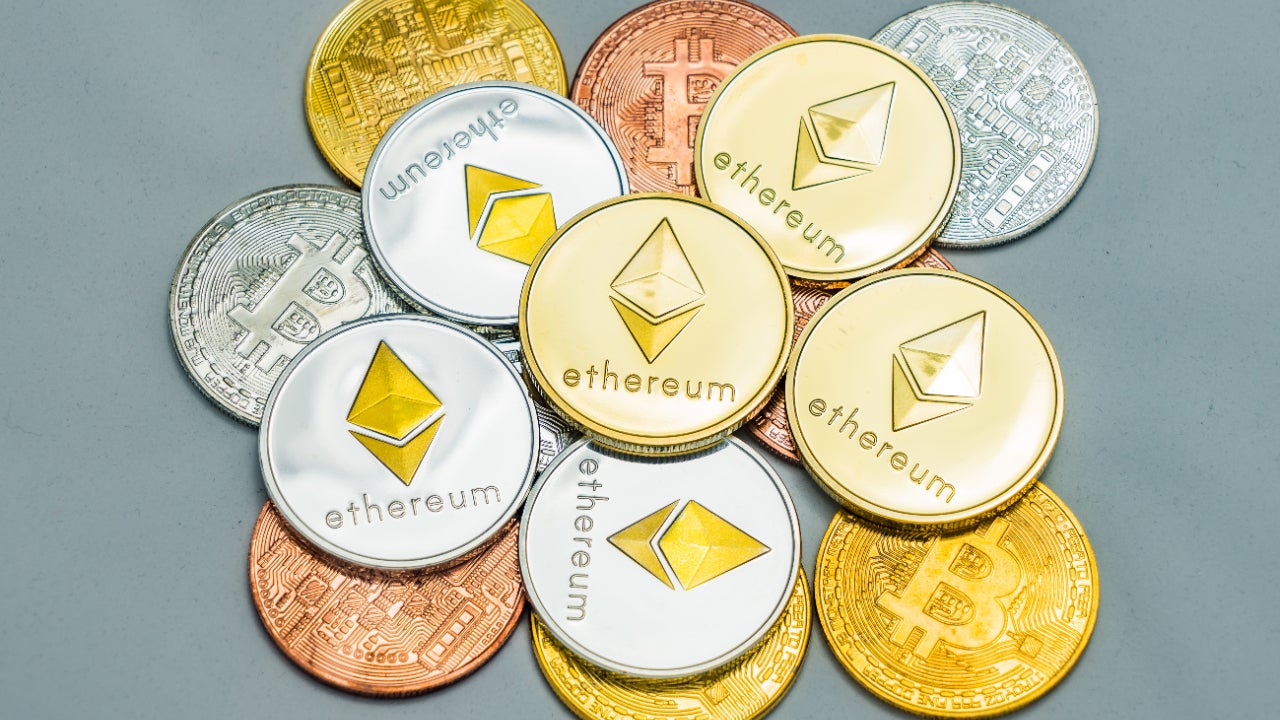Introduction
With the rise in popularity of cryptocurrencies, there has been an increased demand for seamless and efficient ways to exchange different digital assets. Two prominent cryptocurrencies, Bitcoin and Ripple, have gained significant attention from investors and enthusiasts alike. If you are looking to diversify your cryptocurrency portfolio or simply explore new investment opportunities, exchanging Bitcoin to Ripple can be a viable option.
Bitcoin, the pioneer of cryptocurrencies, is known for its decentralized nature and widely recognized as a store of value. On the other hand, Ripple, often referred to as XRP, stands out with its focus on fast and low-cost international money transfers. By exchanging Bitcoin to Ripple, you can benefit from the strengths of both cryptocurrencies and potentially capitalize on the ever-evolving crypto market.
However, exchanging Bitcoin to Ripple involves navigating through various steps, including setting up a wallet, choosing a trading platform, and executing the exchange transactions. This guide aims to walk you through the process, providing you with the necessary information to successfully exchange Bitcoin to Ripple.
Before we dive into the specifics of the exchange process, it’s crucial to have a basic understanding of both Bitcoin and Ripple. Bitcoin, introduced in 2009 by Satoshi Nakamoto, operates on a decentralized network of computers and utilizes blockchain technology to enable secure and transparent transactions. Ripple, developed by Ripple Labs, focuses on providing fast and cost-effective cross-border payments, empowering financial institutions to facilitate seamless money transfers.
To proceed with the exchange, you need to have a wallet where you can store your Ripple. Wallets serve as digital storage for your cryptocurrencies, allowing you to securely hold, send, and receive them. There are various types of wallets available, including software wallets, hardware wallets, and online wallets. Each type has its own advantages and considerations, so it’s essential to choose the one that best suits your needs in terms of convenience and security.
Understanding Bitcoin and Ripple
Bitcoin and Ripple are both digital currencies, but they serve different purposes in the cryptocurrency space. Understanding their unique characteristics can help you make informed decisions when it comes to exchanging Bitcoin to Ripple.
Bitcoin, often referred to as the first cryptocurrency, was created in 2009 by an individual or a group of individuals using the pseudonym Satoshi Nakamoto. It operates on a decentralized network called the blockchain, which is a public ledger that records all Bitcoin transactions. Bitcoin is known for its limited supply, with a maximum of 21 million coins that can ever be mined. This scarcity is one of the factors contributing to Bitcoin’s store of value status. Additionally, Bitcoin is widely recognized and accepted, making it easily accessible for buying, selling, and exchanging.
Ripple, also known by its currency symbol XRP, stands out in the cryptocurrency world for its focus on facilitating fast and low-cost international money transfers. Ripple was created by Ripple Labs in 2012 and aims to solve the inefficiencies found in traditional payment systems. Unlike Bitcoin, which operates on a decentralized network, Ripple relies on a more centralized infrastructure, where transactions are validated by a group of trusted nodes. This allows for faster transaction times and lower fees compared to traditional methods like wire transfers.
One important distinction between Bitcoin and Ripple is their use case. Bitcoin is primarily seen as a store of value and a medium of exchange. It has gained popularity as a speculative investment, with many people holding onto their Bitcoin in the hopes that its value will continue to rise. On the other hand, Ripple’s focus is on providing real-world utility as a solution for cross-border payments. Ripple’s technology, known as the RippleNet, enables financial institutions to connect and transact with each other, providing a seamless and cost-effective way to move money across international borders.
In terms of transaction speed, Bitcoin has faced challenges due to its decentralized nature. Transactions can take anywhere from a few minutes to several hours to be confirmed, depending on network congestion. On the other hand, Ripple boasts fast transaction times, with average settlement times of just a few seconds, making it ideal for time-sensitive transactions.
While Bitcoin and Ripple differ in several aspects, their coexistence in the cryptocurrency space allows for diversification and exploration of different investment opportunities. Exchanging Bitcoin to Ripple provides you with exposure to both the established and futuristic aspects of the crypto market.
Setting up a Wallet
Before you can exchange Bitcoin to Ripple, you need to have a wallet where you can securely store your Ripple. A wallet serves as a digital storage for your cryptocurrencies and enables you to send, receive, and manage your digital assets. Here are the steps to set up a wallet:
- Choose the right type of wallet: There are several types of wallets available, including software wallets, hardware wallets, and online wallets. Software wallets are applications that you install on your computer or mobile device. Hardware wallets are physical devices that store your cryptocurrencies offline for enhanced security. Online wallets, also known as web wallets, are wallets hosted on cloud-based platforms. Consider your security preferences, convenience, and accessibility when choosing the right type of wallet.
- Research and compare wallets: Once you’ve decided on the type of wallet, research different wallets available in that category. Look for wallets that have a good reputation, strong security features, and user-friendly interfaces. Compare features, such as multi-factor authentication, backup and recovery options, and compatibility with different operating systems.
- Create your wallet: After selecting a suitable wallet, you’ll need to create an account. This typically requires providing an email address, setting a strong password, and, in some cases, going through a verification process. Follow the instructions provided by the wallet provider to complete the account creation process.
- Secure your wallet: Once your account is created, take additional steps to secure your wallet. Enable two-factor authentication (2FA) for an added layer of security. Back up your wallet by storing the recovery phrase or seed phrase in a safe place. This will allow you to regain access to your wallet in case of loss, theft, or device failure.
- Explore additional features: Many wallets offer additional features, such as built-in exchange services, portfolio tracking, and integration with other platforms. Take some time to familiarize yourself with these features and customize your wallet settings according to your preferences.
Remember, choosing a reliable and secure wallet is crucial to the safety of your cryptocurrencies. Take the time to thoroughly research and compare different options before making a decision. Additionally, keep your wallet software and devices updated to benefit from the latest security enhancements.
Choosing a Trading Platform
When it comes to exchanging Bitcoin to Ripple, selecting the right trading platform is essential. A trading platform serves as a marketplace where you can buy and sell cryptocurrencies. Here are some factors to consider when choosing a trading platform:
- Security: Security should be a top priority when selecting a trading platform. Look for platforms that offer robust security measures, such as two-factor authentication (2FA), encryption, and cold storage for funds. Research the platform’s reputation and history of security incidents to ensure your assets will be protected.
- Liquidity: Liquidity refers to the ease with which a cryptocurrency can be bought or sold on the trading platform. Higher liquidity ensures that there are enough buyers and sellers, reducing the risk of price manipulation and allowing for smoother transactions. Consider platforms with high trading volumes and a wide range of available cryptocurrencies.
- User-friendly interface: A user-friendly interface can greatly enhance your trading experience. Look for platforms that have an intuitive and easy-to-navigate interface, making it straightforward for you to execute trades, view charts, and monitor your portfolio.
- Fees: Trading platforms often charge fees for transactions, including depositing, trading, and withdrawing funds. Compare the fee structures of different platforms to ensure that they align with your trading strategy and budget. Keep in mind that some platforms may offer discounts or lower fees for high-volume traders.
- Customer support: Reliable customer support is essential in the world of cryptocurrency trading. Look for platforms that offer responsive and knowledgeable customer support to address any concerns or issues you may encounter while using the platform.
- Regulation and compliance: It’s important to consider the regulatory and compliance framework of the trading platform. Some platforms operate within strict regulatory guidelines, offering enhanced protection for users’ funds and adhering to know-your-customer (KYC) and anti-money laundering (AML) regulations. However, others may operate in jurisdictions with more lenient regulations. Evaluate the platform’s stance on regulations and choose one that aligns with your preferences and risk tolerance.
Research and compare different trading platforms, considering the factors mentioned above, to find a platform that meets your specific requirements. It’s always a good idea to start with smaller amounts and gradually increase your trading activity once you are comfortable with the platform’s features and security measures.
Remember, the trading platform you choose can impact the efficiency and security of your Bitcoin to Ripple exchange, so take the time to make an informed decision.
Creating an Account
Before you can begin exchanging Bitcoin to Ripple on a trading platform, you’ll need to create an account. This process typically involves providing some personal information and verifying your identity. Here are the steps to create an account:
- Select a trading platform: Choose a reputable trading platform that supports the exchange of Bitcoin to Ripple. Consider factors such as security, fees, user interface, and available features.
- Visit the platform’s website: Go to the trading platform’s official website and find the sign-up or registration page. This is usually located prominently on the homepage or in a top navigation menu.
- Provide your email and create a password: Enter your email address and create a strong, unique password for your trading account. Make sure to choose a password that is hard to guess and includes a combination of letters, numbers, and symbols.
- Complete the verification process: Some trading platforms require you to verify your email address. You may need to click on a verification link sent to the email address provided during registration.
- Submit personal information: To comply with regulations and prevent fraudulent activity, trading platforms often require users to provide additional personal information. This may include your full name, date of birth, address, and sometimes even a government-issued identification document.
- Verify your identity: Depending on the platform’s policies and regulations, you may need to complete a verification process to confirm your identity. This typically involves uploading a scanned or photographed copy of your identification document, such as a passport or driver’s license. Some platforms may also require you to take a selfie or provide additional proof of address.
- Set up additional security measures: To enhance the security of your trading account, consider enabling two-factor authentication (2FA). This adds an extra layer of protection by requiring a second authentication factor, such as a code generated by a mobile app, in addition to your password.
- Read and accept the platform’s terms and conditions: Thoroughly review the trading platform’s terms of service and user agreement. Make sure you understand and agree to the platform’s policies, including their fee structure, privacy practices, and dispute resolution process.
- Fund your account: After successfully creating your trading account, it’s time to fund it. Depending on the trading platform, you may be able to deposit Bitcoin directly into your account or deposit fiat currency and then purchase Bitcoin to proceed with the exchange process.
It’s important to note that the account creation process may vary slightly from one trading platform to another. Carefully follow the instructions provided by the platform and double-check the accuracy of the information you provide. Keep your account credentials and any security information, such as recovery phrases or 2FA codes, in a safe and secure place.
Creating an account is the first step towards exchanging Bitcoin to Ripple, and it’s crucial to choose a reputable and trustworthy trading platform. Take your time to research different platforms and evaluate their security measures, user reviews, and regulatory compliance to ensure a seamless and secure trading experience.
Depositing Bitcoin
Once you have created an account on a trading platform, the next step in exchanging Bitcoin to Ripple is depositing your Bitcoin into your trading account. This allows you to have the necessary funds available for the exchange. Here’s a guide on how to deposit Bitcoin:
- Access your trading account: Log in to your trading platform account using your credentials. Navigate to the “Wallet” or “Balances” section of the platform.
- Find the Bitcoin deposit address: Look for the Bitcoin deposit address or “Deposit” option within your account. This can usually be found under the wallet section dedicated to Bitcoin.
- Copy the deposit address: Once you’ve found the Bitcoin deposit address, copy it to your clipboard. Make sure to double-check the address, as any errors could result in the loss of your funds. It’s recommended to use the copy-and-paste method to avoid mistakes.
- Initiate the deposit: In your personal Bitcoin wallet, initiate a transfer or withdrawal of your Bitcoin. This process may vary depending on the wallet you use, but it generally involves specifying the amount of Bitcoin you want to send and pasting the deposit address obtained from the trading platform.
- Confirm the transaction: After entering the necessary details, review the transaction one final time to ensure accuracy. Confirm the Bitcoin transfer, and wait for the transaction to be completed.
- Wait for confirmation: Bitcoin transactions require multiple confirmations on the blockchain network before they are considered completed. The number of confirmations required can vary, but it typically takes around 10-30 minutes for a transaction to be confirmed.
- Check your account balance: Once the Bitcoin transaction is confirmed, check your trading account balance on the platform. Your Bitcoin deposit should reflect in your account balance. Some platforms may require additional processing time for the deposit to be credited.
It’s important to note that the exact steps may vary slightly depending on the trading platform you are using. Some platforms may also set minimum and maximum deposit limits for Bitcoin. Be sure to double-check the platform’s guidelines and any deposit fees or requirements before initiating the transfer.
Keep in mind that blockchain networks can occasionally face congestion, resulting in slower transaction times or higher fees. It’s advisable to check the current network conditions and adjust your transfer accordingly. Additionally, always ensure that you have control over your private keys and take necessary precautions to protect your Bitcoin wallet’s security.
Depositing Bitcoin into your trading account is a crucial step towards exchanging it for Ripple. By following the platform’s guidelines and ensuring the accuracy of your transactions, you can successfully fund your account and proceed with the exchange process.
Trading Bitcoin for Ripple
Once you have successfully deposited Bitcoin into your trading account, the next step in exchanging Bitcoin to Ripple is to execute the actual trade. This process involves selling your Bitcoin for Ripple on the trading platform. Here’s a step-by-step guide on how to trade Bitcoin for Ripple:
- Access the trading interface: Log in to your trading platform account and navigate to the trading interface. This area of the platform allows you to view live price charts and execute trades.
- Select the Bitcoin to Ripple trading pair: Within the trading interface, locate the section where you can choose the trading pair. Look for the option to trade Bitcoin for Ripple (BTC/XRP).
- Specify the amount: Determine the amount of Bitcoin you want to exchange for Ripple. You can either enter the precise amount or select a percentage of your Bitcoin balance to trade.
- Review the trade details: Take a moment to review the trade details, including the current exchange rate, trading fees, and any additional features or options offered by the platform.
- Place the trade: Once you are satisfied with the trade details, execute the trade by clicking on the appropriate button, such as “Buy XRP” or “Trade.
- Confirm the trade: Some trading platforms may require you to confirm the trade by re-entering your account password, inputting a verification code, or completing an additional security step. Follow the platform’s instructions to finalize the trade.
- Monitor the trade: After placing the trade, closely monitor the platform’s interface to see the status of your trade. You should be able to view the execution price, transaction fees, and any updates related to the trade.
- Check your balance: Once the trade is executed, check your trading account balance to ensure that the Ripple (XRP) has been credited. The platform should reflect your updated Ripple balance.
Remember that the trading process may vary slightly depending on the trading platform you’re using. Some platforms may offer advanced trading features, such as limit orders or stop-loss orders, allowing you to set specific price points for buying or selling Ripple. Familiarize yourself with the trading tools and options available on the platform to maximize your trading experience.
It’s important to note that cryptocurrency markets are highly volatile, and prices can fluctuate rapidly. Keep an eye on the live market charts and consider setting stop-loss orders or taking other risk management measures to protect your investment. It’s also worth mentioning that trading fees may apply for executing trades, so be sure to review the platform’s fee structure.
By following the steps above and staying informed about market trends, you can successfully trade your Bitcoin for Ripple and potentially benefit from the unique advantages that Ripple offers in the cryptocurrency market.
Withdrawing Ripple to your Wallet
Once you have successfully traded your Bitcoin for Ripple on a trading platform, the next step is to withdraw your Ripple from the platform and transfer it to your own personal wallet. This allows you to have full control over your Ripple assets and ensures their security. Here’s a step-by-step guide on how to withdraw Ripple to your wallet:
- Access your trading account: Log in to your trading platform account using your credentials. Navigate to the “Wallet” or “Balances” section of the platform.
- Locate your Ripple balance: Find your Ripple (XRP) balance within your trading account. It should be listed alongside your other cryptocurrency balances.
- Check for withdrawal options: Look for the option to withdraw or send your Ripple to an external wallet. This option should be available within the trading platform’s interface.
- Enter your wallet address: In your personal Ripple wallet, generate or obtain your wallet address. This address is unique to your wallet and acts as the destination for your Ripple withdrawal. Go back to the trading platform and enter your wallet address in the designated field.
- Specify the withdrawal amount: Determine the amount of Ripple you want to withdraw from the trading platform. Some platforms allow you to enter the precise amount, while others may have preset options such as withdrawing the full balance or a percentage of it.
- Review and confirm the withdrawal: Take a moment to review the withdrawal details, including the Ripple address and the withdrawal amount. Double-check all the information for accuracy, as cryptocurrency transactions are irreversible.
- Initiate the withdrawal: Once you are confident in the details, initiate the withdrawal by confirming the transaction. Depending on the platform, you may need to verify the withdrawal via email or 2FA authentication.
- Monitor the withdrawal: Keep an eye on the confirmation process within the trading platform’s interface. You should receive updates on the status of the withdrawal, including the transaction ID or hash.
- Verify the transaction: After the withdrawal is confirmed, check your personal Ripple wallet for the transaction. This can be done by entering your wallet address on a blockchain explorer, which will display the transaction details, including its completion.
It’s important to note that withdrawal times can vary depending on network congestion, but Ripple transactions generally have fast confirmation times. Keep in mind that trading platforms may also have withdrawal limits or fees, so familiarize yourself with the platform’s terms and conditions regarding withdrawals.
By following these steps, you can safely withdraw your Ripple from the trading platform and transfer it to your personal wallet. Having your Ripple in a wallet that you control gives you ownership over your assets and provides an additional layer of security for your cryptocurrencies.
Tips and Best Practices
Exchanging Bitcoin to Ripple requires careful consideration and attention to detail. To ensure a smooth and successful transaction, here are some tips and best practices to keep in mind:
- Research and choose reputable platforms: Before selecting a trading platform, thoroughly research its reputation, security measures, and user reviews. Opt for platforms that have a proven track record and positive feedback from the cryptocurrency community.
- Keep your wallet secure: Whether you’re using a software wallet, hardware wallet, or online wallet, prioritize the security of your wallet. Enable all available security features, such as two-factor authentication (2FA), and regularly update your wallet software to protect against vulnerabilities.
- Stay informed about market trends: Stay up to date with the latest news and trends in the cryptocurrency market. Understanding market conditions can help you make informed decisions about when to exchange Bitcoin for Ripple and vice versa.
- Manage your risk: Cryptocurrency markets are highly volatile, so it’s essential to have a risk management strategy in place. Consider setting stop-loss orders to limit potential losses and avoid investing more than you can afford to lose.
- Use dollar-cost averaging: If you plan to invest in cryptocurrencies regularly, consider implementing a dollar-cost averaging (DCA) strategy. This involves investing a fixed amount of money at regular intervals, regardless of the current market price. DCA can help mitigate the impact of short-term volatility.
- Keep a record of your transactions: Maintain a record of all your Bitcoin to Ripple exchanges, including transaction details, dates, and amounts. This documentation can be useful for tax purposes and tracking your investment performance.
- Practice diversification: Rather than putting all your resources into a single cryptocurrency, consider diversifying your portfolio. Invest in multiple cryptocurrencies to spread your risk and potentially take advantage of different market movements.
- Stay vigilant against scams: Be cautious of phishing attempts, fake trading platforms, and fraudulent schemes in the cryptocurrency space. Verify the legitimacy of platforms and always double-check URLs to ensure you are on the official website.
- Seek professional advice if needed: If you are new to cryptocurrency trading or unsure about any aspect of the process, it may be helpful to seek advice from a financial advisor or crypto expert. They can provide guidance and help you navigate the complexities of the market.
Remember that cryptocurrency trading involves risks, and there are no guarantees of profit. Always approach the market with a cautious mindset and make informed decisions based on your financial goals and risk tolerance.
By following these tips and best practices, you can enhance your experience and increase the chances of a successful Bitcoin to Ripple exchange.
Conclusion
Exchanging Bitcoin to Ripple can be an exciting opportunity to diversify your cryptocurrency holdings and explore new investment possibilities. However, it’s crucial to approach the process with careful consideration and follow best practices to ensure a smooth and secure exchange. Throughout this guide, we have explored the necessary steps involved, from setting up a wallet and choosing a trading platform to executing the trade and withdrawing your Ripple to your personal wallet.
By understanding the unique characteristics of Bitcoin and Ripple, you have gained insight into the advantages each cryptocurrency offers in the digital market. Bitcoin, as the pioneer of cryptocurrencies, is recognized as a store of value and a widely accepted medium of exchange. On the other hand, Ripple stands out with its focus on fast and cost-effective cross-border transactions, empowering financial institutions to facilitate seamless money transfers.
Setting up a secure wallet to store your cryptocurrencies and choosing a reputable trading platform are crucial steps in the exchange process. Research different wallet options and trading platforms, considering factors such as security measures, liquidity, user-friendliness, fees, and customer support. Taking the time to select the right wallet and trading platform can enhance your trading experience and ensure the safety of your assets.
Executing the exchange from Bitcoin to Ripple involves depositing your Bitcoin into your trading account, trading Bitcoin for Ripple on the platform, and then withdrawing your Ripple to your personal wallet. Following the platform’s guidelines, confirming transaction details, and remaining vigilant throughout the process are key to a successful exchange.
To optimize your trading experience, we have provided tips and best practices, including staying informed about market trends, practicing risk management, and seeking professional advice when needed. These recommendations can help you navigate the dynamic cryptocurrency market and make well-informed decisions about your investments.
Remember, cryptocurrency trading carries risks, and prices can be highly volatile. It’s essential to approach the market with caution, invest what you can afford to lose, and make decisions based on your own financial goals and risk tolerance.
With this comprehensive guide, you are now equipped with the knowledge and understanding to confidently exchange Bitcoin to Ripple. Embrace the opportunities, stay informed, and enjoy exploring the ever-evolving world of cryptocurrencies.

























